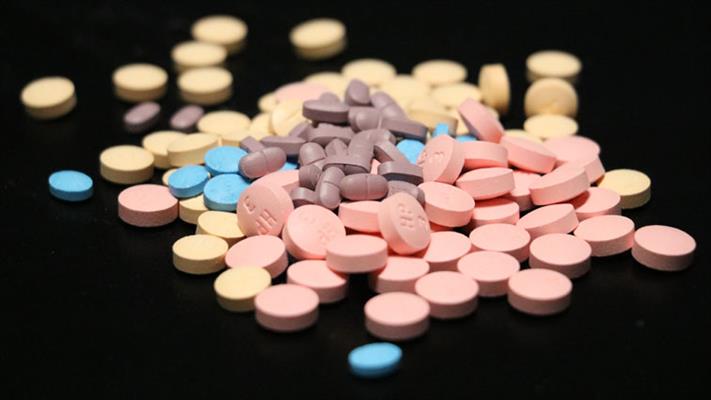
10 May State: More Marylanders Died From Fentanyl O
Friday, May 10, 2019
WBAL NewsRadio 1090 and FM 101.5’s Anne Kramer
More than 2,300 Marylanders died from a drug overdose last year.
The State Health Department reports that is an increase of about five percent from 2017.
The number of Marylanders who died after taking a fatal dose of fentanyl, the synthetic version of heroin, jumped by 17 percent last year, according to the 2018 annual report.
State health officials say cocaine related deaths went up last year by 30 percent. The report found that almost all of the cocaine related deaths came from the users taking fatal doses of cocaine that was combined with fentanyl.
Last year, about 2,100 people died from drug overdoses that were related to opioids.
Steve Shuh, the Executive Director of the Opioid Operational Command Center says that the highest number of overdose deaths were reported in Anne Arundel County, Baltimore City, and Baltimore County.
Read more of the report and what the Executive Director had to say about the findings.
ANNAPOLIS, MD — The Opioid Operational Command Center (OOCC) today released its 2018 annual report, which includes 2018 preliminary opioid-related overdose death data, performance measures related to metrics set by state agencies and Maryland’s 24 opioid intervention teams (OITs), opioid-related spending, as well as additional information regarding Maryland’s fight against the heroin and opioid epidemic.
“Since Governor Hogan declared a state of emergency in response to the opioid crisis in March 2017, Maryland has made tremendous progress in implementing prevention and educational programs, stepping up enforcement, and expanding treatment and recovery programs throughout the state,” said Steve Schuh, executive director, OOCC. “The Opioid Operational Command Center monitors more than 200 performance measures pertaining to programs and best practices, and, as you will see in this report, virtually all of those measures are moving in a positive direction.”
The OOCC tracks 36 local-level programs and initiatives implemented by various local partners through the OITs. The following represent just a few included in the report.
Prevention and Education
- The number of jurisdictions that have implemented information campaigns aimed at prevention and stigma reduction has increased by 118 percent, from 11 prior to March 2017 to 24 in 2018.
- The number of jurisdictions that have implemented programs to increase employer support for individuals seeking treatment and those in recovery has increased by 550 percent, from 2 prior to March 2017 to 13 in 2018.
- The number of jurisdictions that have implemented programs to support youth impacted by overdose or addiction in their homes has increased by 133 percent, from 6 prior to March 2017 to 14 in 2018.
Enforcement
- The number of jurisdictions that have implemented the heroin coordinator program has increased by 33 percent, from 15 prior to March 2017 to 20 in 2018.
Treatment and Recovery
- The number of jurisdictions that have implemented a facilitated approach to referral treatment upon release from a correctional facility has increased by 120 percent, from 10 prior to March 2017 to 22 in 2018.
- The number of jurisdictions that have implemented mobile crisis teams for substance use disorder has increased by 60 percent, from 10 prior to March 2017 to 16 in 2018.
- The number of jurisdictions that have implemented peer recovery specialists in at least one of these areas — emergency departments, Overdose Survivors Outreach Program (OSOP), OB/GYN offices, other healthcare settings, recovery centers, street outreach, crisis response, stabilization centers, partnering with law enforcement or corrections, schools, CBOs, department of health, fire and rescue, treatment centers, and department of social services — has increased by 33 percent, from 18 prior to March 2017 to all 24 jurisdictions in 2018.
Additionally, the report contains total counts of unintentional drug and alcohol-related intoxication deaths occurring in Maryland through the fourth quarter of 2018, the most recent period for which preliminary data are available, as well as for opioid-related, heroin-related, fentanyl-related, prescription opioid-related, and cocaine-related deaths. Counts also are shown for the same period of 2009-2017 to allow for review of trends over time.
In 2018, there were more than 2,380 total unintentional intoxication deaths, an increase of 5 percent from 2017. Of the total, about 2,110 deaths were opioid-related, an increase of 5 percent from 2017 — the slowest rate of increase in opioid-related fatalities since 2011.
“We are encouraged that the epidemic is starting to plateau,” said Schuh. “2018 was the second year in a row that fatalities increased by less than 10 percent.”
Heroin-related fatalities in 2018 fell by 24 percent. 2018 was also the second year in a row that heroin-related fatalities declined in Maryland. The number of prescription opioid-related deaths in Maryland also fell for the second year in a row. There were about 370 prescription opioid-related deaths in Maryland 2018, a decline of 10 percent.
The number of fentanyl-related deaths in Maryland in 2018 was almost 1,870, an increase of 17 percent. Fentanyl and its analogs accounted for approximately 88 percent of all opioid-related fatalities in 2018. The rate of increase in the number of fentanyl-related deaths decelerated for the second year in a row.
The number of cocaine-related deaths in Maryland also increased by 30 percent to a total of about 780. This is the third straight year of significant increases in the number of cocaine-related fatalities. Approximately 89 percent of all cocaine-related fatalities in 2018 was in combination with fentanyl.
Please note that the fatalities data presented in this report are preliminary and subject to change.
—–
Article is invalid or is no longer published.
[ad_2]
Source link




No Comments